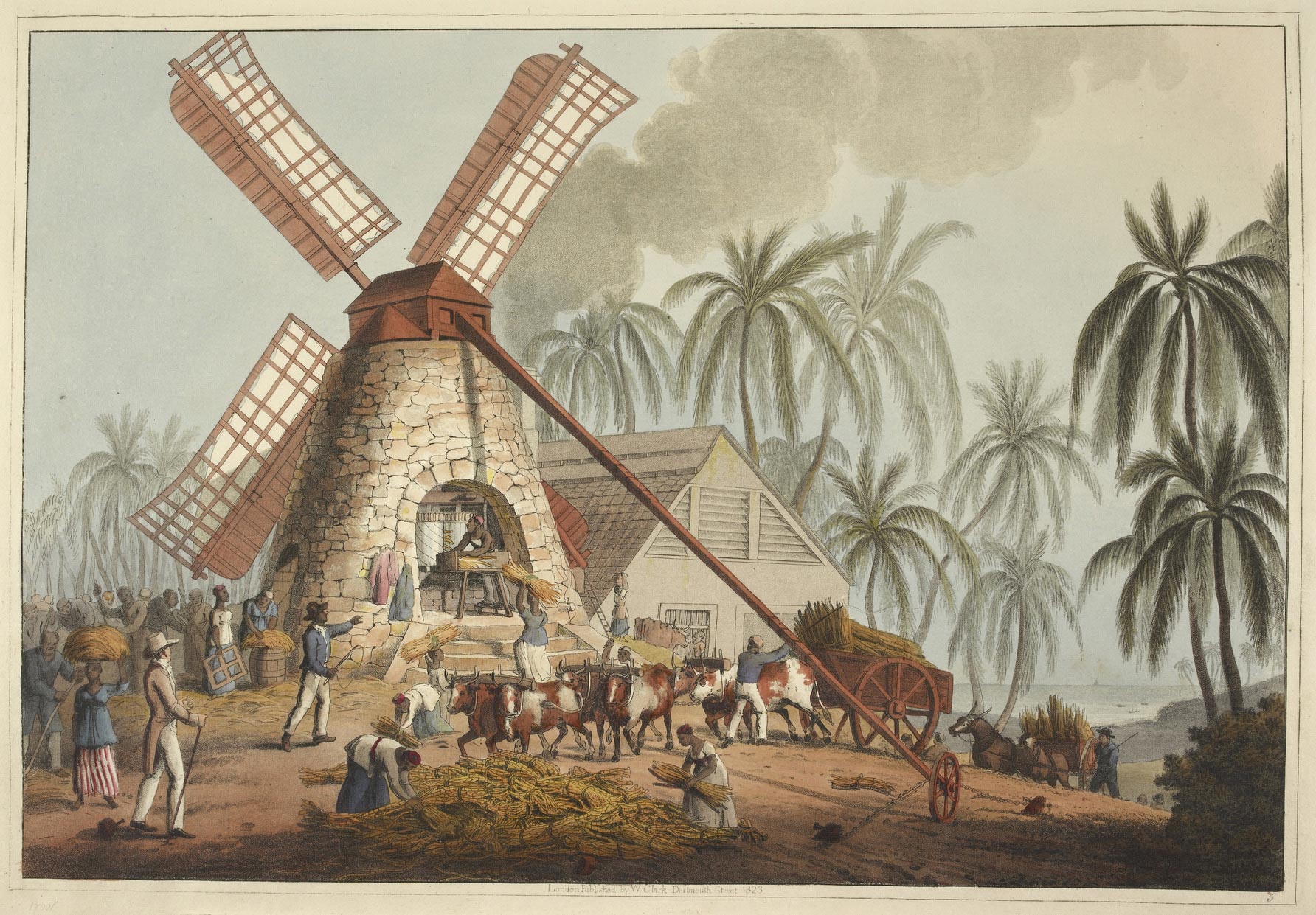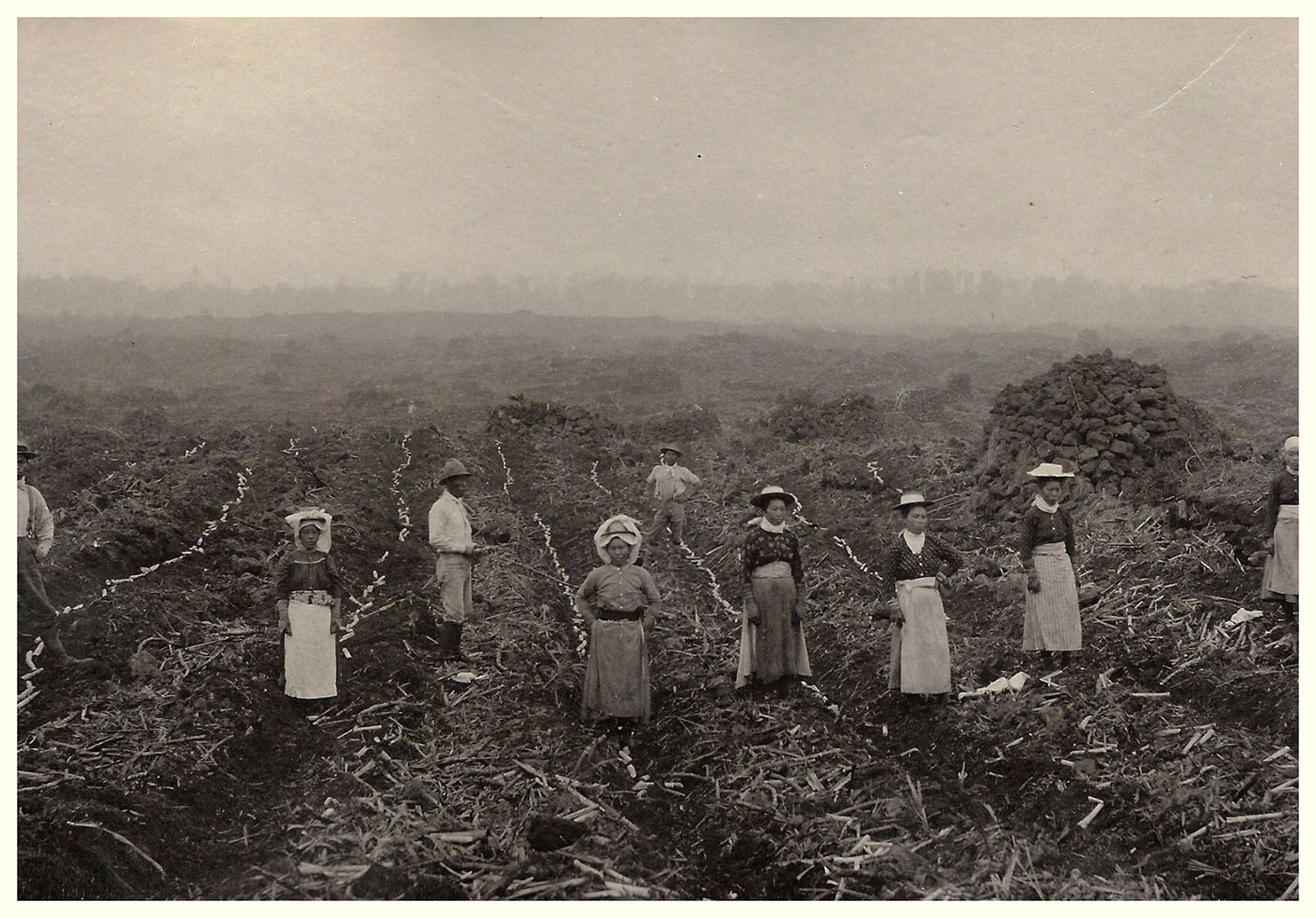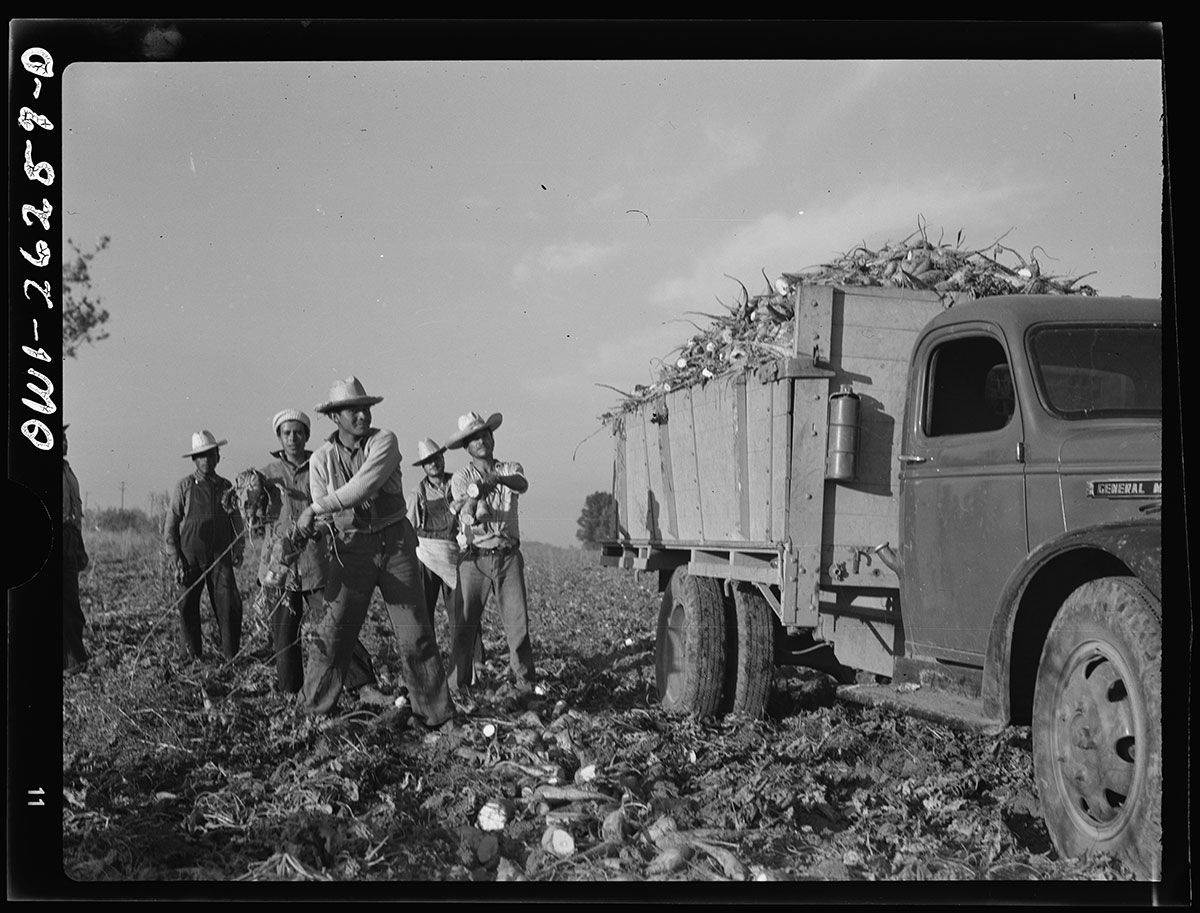How the Sugar War Has Shaped Our World
From slavery to Brexit, sugar’s complicated history.

↑
African slaves grinding sugar cane in a windmill on the Island of Antigua, circa 1823
Editor’s Note: This story is published in The Tradition Issue of Life & Thyme Post, our exclusive newspaper for Life & Thyme members. Get your copy.
Starting around October of each year in Norfolk, England, mounds of just-pulled root vegetables appear at the edge of the fields. This marks the beginning of the annual sugar beet harvest. The trucks that transport the crop are packed so full that the roots often spill out as the vehicles turn down small country roads on their way to the refinery. Notably, the drivers of these trucks are mostly migrant workers; road signs installed near the refinery are multilingual, in Polish, Portuguese, Russian, Croatian and Latvian.
When I first saw this operation, it was the large mounds of sugar beets that caught my eye. I did not know what those piles of root vegetables were, or why the signs were in so many different European languages. It inspired an investigation into the history of sugar beets, and what I discovered was a story that stretches from slavery to Brexit, and shows how our production of sweetness shapes the world around us.
I
In 1597, a German lawyer named Paul Hentzner traveled to England and was received by Queen Elizabeth I. In an account of his travels, he wrote that she looked, “very majestic; her face oblong, fair but wrinkled; the eyes small, yet black and pleasant; her nose a little hooked, her lips narrow, and her teeth black (a defect the English seem subject to, from their great use of sugar).”
The sugar Elizabeth consumed would have been produced in Brazil. Christopher Columbus had brought sugar cane back with him on his voyage, and one hundred years later, England was a large importer of sugar from the New World.
Over the next two hundred years, what was a luxury in the sixteenth century would ultimately become a staple of the European diet. Sugar rose with capitalism. By the end of the eighteenth century, sugar was consumed in Europe by people of every social class; they ate sweets and drank tea, coffee, cocoa and rum. Sugary tea and bread with jam were given to factory workers on their breaks as a high-calorie meal allowing them to get back to work as quickly as possible.

⟵
Queen Elizabeth I ruled as Queen of England and Ireland from 1558 to 1603. She was known to have a sweet tooth and fancied candied violets. Eventually, her teeth turned black due to consuming too much sugar cane.
II
After the Haitian Revolution, sugar cane production moved to places like Louisiana, Cuba and Hawaii, while the development of sugar beets continued by abolitionists who hoped their cultivation could deprive the plantation owners of their sugar profits and defeat slavery economically.
Hawaii didn’t need sugar cane to be imported by Europeans; it was already there. The first inhabitants of the islands had brought cane stalks with them when they sailed across the Pacific Ocean. But sugar production in Hawaii took off on a commercial scale only when U.S. businessmen came to the island. Instead of slave labor, they used indentured workers from the East.
The Chinese came first—only men, each promised $3.00 a month, plus passage, food, clothing and shelter. They worked twenty-six days a month, ten hours a day, and were supervised by white men on horses bearing whips. And in 1850, Hawaii passed the Masters and Servants Act, which formalized some of the worst practises of plantation life; it outlawed refusal to work, allowing the bosses to chase down and recapture runaways. The length of an absence would be doubled and added to the end of their contract, unpaid.
To prevent their workers from organizing, the Hawaiian plantation owners brought in different ethnic groups. Pitting one population against the other suppressed wages for all. The Chinese were followed by Japanese, Filipinos, Koreans and Mexicans, with each new group supplanting and undermining the last.

⟵
Workers at the Olaa Sugar plantation nine miles from Hilo, Hawaii, circa 1895-1905.
Because only men were brought to work, a “picture bride” system developed among the Japanese workers to entice women to join them from their homeland. They sent back photos with notes that described a happy life on the islands; often the photos were not even of the men they claimed to be, but someone younger or more handsome. When the women arrived, they too worked the cane. Songs called Holehole Bushi, or stripping leaves songs, describe their life:
When I left Japan Nihon deru tok’ya yo –
I left all alone Hitori de deta ga
But now I have children Ima ja ko mo aru
And grandchildren too Mago mo aru
A real look at the Are ga tsureso
Man I am to marry Hito to ka mireba
The picture bride system is Shashin kekkon
Despicable Urameshii
Hawai‘i, Hawai‘i Hawai‘i, Hawai‘i, to yo –
I came, chasing a dream Yume mite kita ga
Now my tears flow Nagasu namida wa
In the canefield Kibi no naka
Why settle for 35 cents a day Sanjugosen de yo –
Doing holehole work Horehore suru yori
When I can sleep with a Chinaman Pake-san to moi-moi sur’ya
And make a dollar Akahi kara
On the sugar cane plantations of Hawaii, workers’ race was used to divide them, but it was at a sugar beet refinery in California where this divide and rule tactic was first defeated. The Oxnard strike of 1903 saw Japanese and Mexican workers unite for the first time in American history.
The town of Oxnard was named for sugar beet factory owner Henry T. Oxnard. Work in the fields was carried out by Mexican and Japanese workers who spent their pay in white-owned bars, shops and canteens. Contractors representing the different ethnic groups bid against each other to secure contracts for the seasonal work; when one offered $1.25 per ton of beet, another undercut them, bidding seventy-five cents.
But the owners went further; they began to pay their workers in “scrip,” credit redeemable only at company-owned stores, and to charge a commission for each contract. In response, the workers organized, forming the Japanese-Mexican Labor Association (JMLA). At trilingual meetings held in Japanese, Spanish and English, the workers decided to strike at the height of beet season when it was crucial for the owners to get the crop out of the ground.
Desperate to complete the harvest, independent beet farmers brought in scab workers from outside the community. In a culmination of violence, the JMLA protested, and a beet farmer shot and killed JMLA member Luis Vazquez. The ensuing media uproar caused owners to back down.
The implications for this series of events went far beyond the sugar beet; it was the first time in American history that a labor union had been formed between people of different racial backgrounds, and they had been successful. Before long, there were multi-ethnic strikes happening widely, even on the sugar cane plantations of Hawaii.

⟵
Mexican agricultural laborers throwing sugar beets into a truck in California.
III
What does the two hundred-year-old rivalry between sugar cane and sugar beet have to do with those root vegetables I came across in Norfolk, and our modern global sugar industry?
The Front Side of the Medal, by Norwegian novelist Dag Solstad, told the history of the industrial engineering company Aker. His theory was that the history of a company could give a better picture of how society operates than any character’s thoughts and feelings. If you had to choose one company through which to tell the story of our modern world, the British sugar manufacturers Tate & Lyle would be a capable lens.
Tate & Lyle made its fortune through shipping, indenture, slavery and cane sugar. Sugar money built Henry Tate’s art collection, later endowed to the British state as the Tate Gallery. To this day, Tate & Lyle produce cane sugar, mainly grown in Belize.
Nowadays, though, the cheapest sugar in the world comes from Brazil, which uses intensive bee-killing pesticides banned in Europe. Some Brazilian sugarcane plantations still use slave-like conditions—the workers are forced into debt; they work ten-hour days and are given raw sugar cane for their meals. It is exactly these conditions that make Brazilian cane sugar cheap and attractive to companies like Tate & Lyle.
For a long time, Tate & Lyle wanted to buy Brazilian sugar and sell it in the U.K., but they couldn’t. Because sugar beet is grown in Europe, the European Union tries to protect beet farmers; it charges a tariff on sugar brought from overseas. These tariffs make it too expensive to bring Brazilian cane sugar to the U.K. Tate & Lyle were stuck. Silvertown, their old refinery in London, sat half full. But then came the 2016 referendum on the European Union.
Tate & Lyle sensed an opportunity with Brexit. They funded the leave campaign heavily, even sponsoring the 2016 Conservative Party conference. And when leave was victorious, they expected something in return.
In August of 2020, they got it. The U.K. government announced it would allow tariff-free imports of cane sugar. In one year alone, this would make Tate & Lyle £73 million. The Bolsonaro government in Brazil is opening up new cane fields in previously protected areas of the Amazon rainforest. As in the time of Elizabeth I, Brazilian sugar will come to London.
The rivalry between cane and beet goes back a long way, and has longstanding implications for our history and our world. Beet sugar, developed in response to slaves from the cane fields demanding their freedom, gave workers from different racial groups their first stage upon which to stand in solidarity, overcoming the use of ethnic divisions pioneered in sugar cane plantations. Now, with Brexit, tariff-free cane sugar will return to the U.K., once again at the heart of a project that aims to undermine working conditions and unleash untold environmental destruction in the Amazon.
Lyle’s Golden Syrup is the oldest brand in the world. On the front of its Victorian green and gold tin is a picture of a lion, underneath which runs the biblical quotation: Out of the strong came forth sweetness. If you look closely at the lion, you will see he is dead, surrounded by a cloud of bees. This relates to the Biblical story of Samson, but perhaps the image is more apt than the owners of Tate & Lyle may realise. Under slavery and indenture, sweetness has long been killing the strong to produce these tins of syrup.


Our comments section is for members only.
Join today to gain exclusive access.